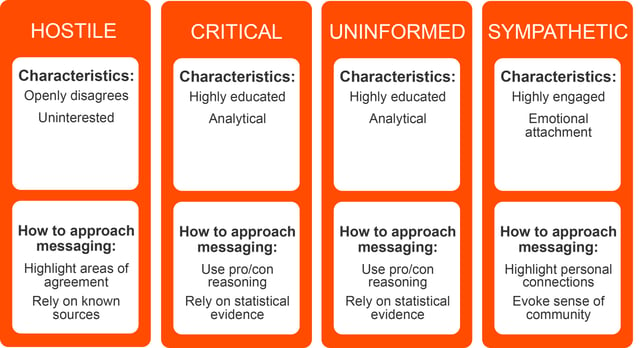Lizzie Evans
Patient recruitment and site support materials are essential to enhancing study awareness and education, but in order to effectively lead to action, study information must be presented in a way that motivates. Before developing messaging for study materials, assess these 5 critical factors that are known to influence patients’ decision making:
- Personal Experience
- Existing Bias
- Demographic
- Personal Relevance
- Need for Commitment

A careful look into these categories will allow you to better understand how a given patient population (or investigator community) will most likely perceive study information. Be aware that types of audiences fall into four main categories: hostile, critical, uninformed or sympathetic. Once you identify audience type(s), consider the approaches described below in order to deliver key messages more directly.
Awareness of audience type also helps you identify ways to avoid presenting information. For example, a hostile audience would quickly reject messaging typically used for a sympathetic audience, and a critical audience may disregard messaging that would be used for an uninformed audience.
To put this into context, imagine a study was looking to enroll patients with untreated high cholesterol. Since most of the patient population would not yet be diagnosed, we can assume the audience falls into the uninformed category. Rather than using a headline that describes the experimental treatment in scientific terms, which would better suit a critical audience (i.e. HCPs), combine question format with fast facts to more effectively intrigue and inform potential study patients with a headline such as, “71 million Americans have high cholesterol. Do you know if you are at risk?”
While necessary to the effectiveness of recruitment efforts, a successful recruitment campaign does not end at well-designed messaging of patient recruitment materials. Providing study staff with training and education on how to optimize the use of study materials is crucial. Next on the blog we will be discussing ways of providing better site support for enrollment.